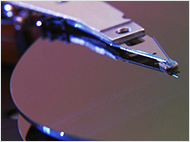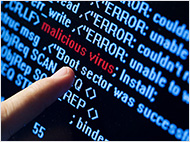Recovering External Storage
- Published: October 23, 2014
- Updated: September 5, 2021
There are several types of external storage, each demanding a very unique approach to data recovery. Read about the differences between external enclosures and NAS units and learn what tools to use to recover information from either system.

High-capacity external storage is gaining popularity at homes. WD Passport and MyCloud, Personal Cloud and other terms refer to pretty much the same concept: your data is stored outside of your computer.
However, external storage devices are not created equal. Not even close. Not even remotely close in fact.
There are two major classes of external storage: external enclosures and NAS.
External enclosures have been around since the day computer hard drives could fit into a briefcase. These are usually simple boxes with one (rarely two or more) built-in or hot-swappable hard drive compartments. External enclosures connect to your computer over a USB, FireWire, Thunderbolt or eSATA interface (some of the better units feature multiple connection options, although only one can be active at any time). Importantly, external enclosures are very simple. They run whatever file system your computer has, they allow direct addressing of physical sectors and data blocks on the hard drive, and they don’t normally have any built-in sharing or management features by themselves.
As a result, recovering data from external enclosures is straightforward. If the enclosure still works, connect it to your computer in the usual way, and run a data recovery tool such as Magic Uneraser or Magic Partition Recovery. If the enclosure no longer works, take the hard drive out, connect it to your PC with a SATA cable, or use another working enclosure of any brand and make to connect. Then run a data recovery tool. If you have an enclosure with more than one drive, just take them one by one.

Okay, that was simple. Now, what about the NAS?
Network Attached Storage (NAS) systems are basically computers built around one or more hard drives. These devices take place of a dedicated file server. NAS units connect to your network with Ethernet and/or Wi-Fi (units having both interfaces are common).
It is important to realize that NAS units DO NOT ALLOW DIRECT DISK ACCESS from outside. They format the disk with whatever file system they feel like, usually ext3, ext4 or XFS, depending on the operating system they run (yes, they run an OS of their own, usually a variation of Linux or FreeBSD). If your NAS has more than one drive inside, it’s probably configured to run them as a RAID, in which case you can only reassemble that exact RAID configuration in that specific NAS model, version, revision and firmware.
Now imagine that a NAS unit has failed. Simply taking the drive(s) out and connecting them to your computer won’t cut it, as the RAID will not be picked up by your computer. Even if you have a single-bay NAS, that single disk will have a file system your PC will likely not be able to recognize.
As a result, your only option to recover information from a NAS is by using a dedicated NAS recovery tool. These tools are made specifically to handle individual and multiple drive configurations from NAS units, reassembling them in the right order and recovering data from all sorts of exotic file systems.
Like This Article?
Stay Tuned






Comments